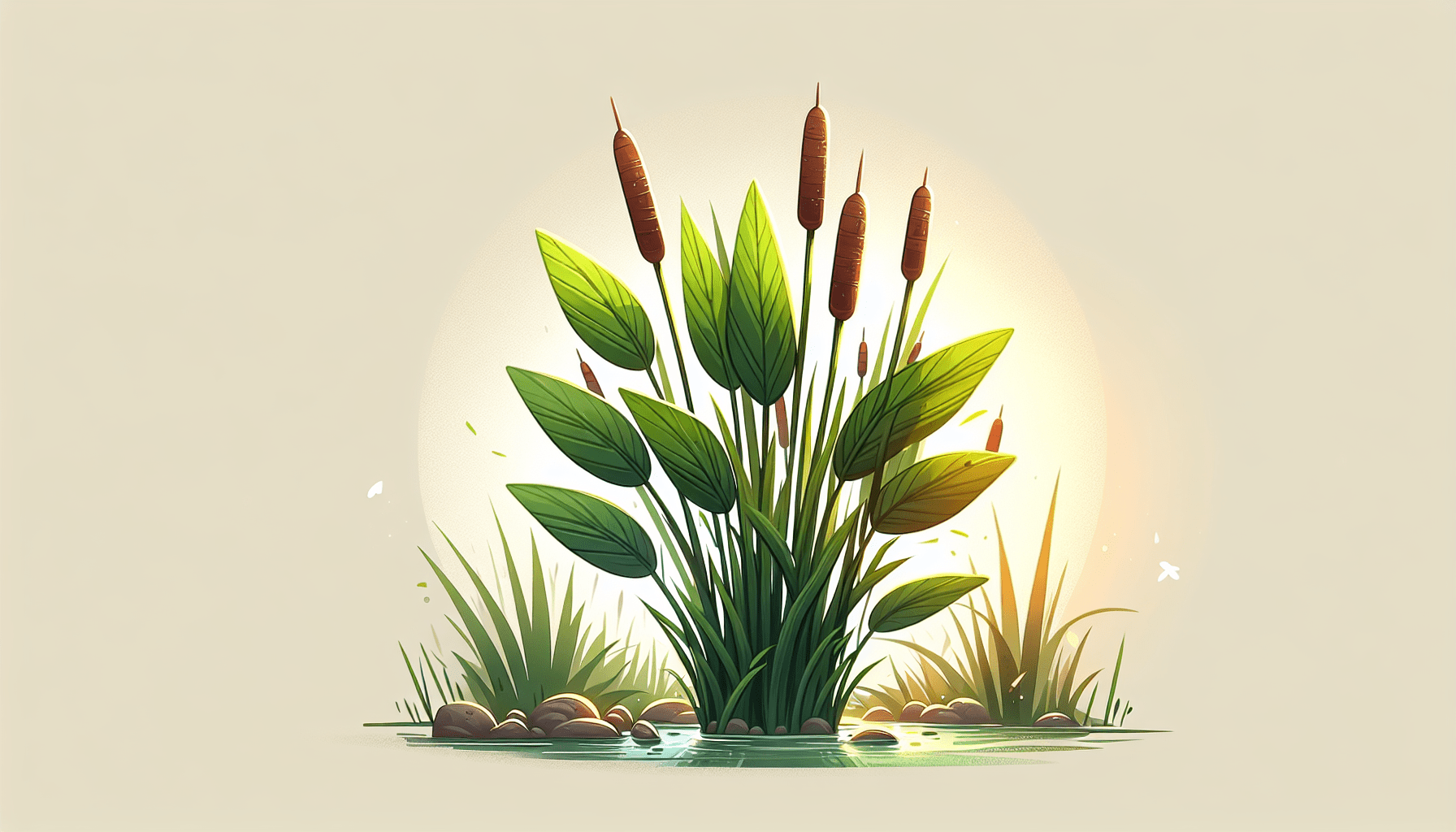The article at hand provides a comprehensive discussion upon a species in the realm of aquatic flora – Typha Alekseevii. Otherwise known as aquatic weeds, this group of plants has a significant role within ecological niches and ecosystems. The Typha Alekseevii, belonging to such a category, presents a myriad of fascinating aspects, underlining the diversity found within aquatic environments. This article aims at unfurling the various characteristics, roles, and importance of Typha Alekseevii to foster a better understanding of these often overlooked organisms.

Definition of Typha Alekseevii
Typha Alekseevii, also known as Alekseev’s Bulrush, is a perennial aquatic plant species of the genus Typha. Belonging to the family Typhaceae, this emergent aquatic weed possesses the distinctive shape and form characteristic of bulrushes or cattails.
Scientific Classification of the Plant
Typha Alekseevii falls under the Kingdom Plantae and Order Poales, taking up the Family Typhaceae and the Genus Typha. The classification reflects its unique biological and morphological characteristics, distinguishing it from other aquatic plants.
Alternative Names and Synonyms
While the scientific name remains Typha Alekseevii, this plant is often referred to as Alekseev’s Bulrush, in honor of the Russian botanist Ivan Alekseevich Alekseev.
Appearance and Physical Characteristics
Description of the Plant Size and Shape
Typha Alekseevii, like other bulrush species, is characterized by its tall, slender form. The plant typically grows to a height of 1.5 to 3 meters, with a few unique cases reaching up to 5 meters. The plant body is cylindrical, crowned by a rough, cylindrical brown flowering spike.
Color and Texture of Leaves
The leaves of Typha Alekseevii are long and linear, generally smooth to touch. Usually, the color of the leaves is grayish-green to dark green.
Flower of Typha Alekseevii
The flowers of Typha Alekseevii are condensed into a cylindrical, densely packed brown inflorescence or spike, which is a common characteristic of the Typha genus.
Seasonal Variations in Appearance
Typha Alekseevii goes through noticeable seasonal changes. New shoots sprout in the spring, while in the summer, the plant reaches the peak of its growth. The flowering spike becomes pronounced in late summer to early fall.
Environmental Requirements
Preferred Temperature and Humidity
Alekseev’s Bulrush has a considerable temperature range, from cool temperate regions to tropical climates. As an aquatic plant, it prefers high humidity and thrives best when located near bodies of water, such as marshlands, swamps, or riversides.
Sunlight Requirements
This plant species prospers in full sunlight exposure but can also adapt to semi-shade conditions, making it a versatile plant in terms of light requirements.
Optimum pH and Soil Conditions
Typha Alekseevii grows optimally in neutral to slightly alkaline soil pH. The plant prefers water-logged, nutrient-rich soils, typically found on marshy and swamplands, riverbanks, and shallow pond margins.

Geographical Distribution
Native Regions and Continents
Typha Alekseevii is native to Eurasia, found predominantly in Russia, Eastern Europe, and Central Asia.
Invasive Presence in Non-Native Areas
Despite its native range, the plant has also been noted for its invasive potential, particularly in regions where it is introduced.
Habitats in Different Countries
Although the exact global distribution of Typha Alekseevii is quite unclear, it is well-documented to persist in diverse habitats ranging from marshlands and swamps to river banks and pond margins.
Life Cycle and Pattern of Growth
Planting Season and Growth Stages
The prime growth stages of these plants begin during the spring when new shoots surface. The plant reaches its full height during summers and begins to produce flowers towards the end of the summer season, peaking at early fall.
Seed Dispersal and Germination
Seeds of Typha Alekseevii are spread by water and wind, featuring a rapid germination process. The ideal condition for germination is in shallow, standing water or moist soil.
Longevity and Lifetime
As a perennial plant, Typha Alekseevii can thrive for many years under suitable conditions. The exact lifespan may vary depending on environmental factors such as climate and competition with other species.
Ecological Role and Interactions
Role in Aquatic Ecosystems
Typha Alekseevii plays a significant role in aquatic ecosystems. The plant assists in stabilizing and protecting soil and banks of water bodies, thereby reducing erosion.
Interactions with Insects, Birds, and Animals
Typha Alekseevii also offers a habitat for various animals, birds, and small aquatic creatures. Its seeds and flowers serve as a food source for insects and birds.
Impact on Other Plant Species
On the flip side, Typha Alekseevii, owing to its vigorous growth, can out-compete other local vegetation and contribute to a decrease in plant biodiversity.
Uses and Applications
Usage by Indigenous People
Historically, different parts of Typha plants have been used by indigenous people for varied purposes, such as making baskets, hats, mats, and even food.
Commercial Uses
Currently, Typha Alekseevii is used for wastewater treatment, phytoremediation, and landscaping due to its capacity to absorb pollutants.
Potential Medicinal Properties
While not specifically proven for Typha Alekseevii, several Typha species have been used in traditional medicine for treating various ailments.
Potential Negative Impacts
Invasiveness and Impact on Biodiversity
Typha Alekseevii can grow so successfully that it becomes an environmental concern. Its ability to out-compete native species may affect the biodiversity and health of aquatic ecosystems.
Hazard to Water Ways and Human Activities
A dense growth of Typha Alekseevii can block waterways, disrupting their normal flow and causing potential hazards to both human activities and local wildlife ecosystems.
Methods and Costs of Control
Controlling the growth of Typha Alekseevii can involve herbicides, manual removal, or biological control. However, all of these approaches can be time-consuming, labor-intensive, and expensive.
Research and Studies
Previous Research on Typha Alekseevii
Previous research has primarily focused on the plant’s ecology, distribution, and potential uses. Various studies have highlighted its value for phytoremediation and wastewater treatment.
Ongoing Studies and Findings
Currently, research evaluates how the plant tolerates different pollutants and conditions, potentially shedding light on how to harness its ability for water treatment and soil remediation.
Opportunities for Future Research
Future research opportunities could delve into its medicinal properties, as well as methods to control its invasion and maintain a balanced ecosystem.
Conservation and Sustainability Measures
Status on the IUCN Red List
Typha Alekseevii does not currently feature on the IUCN Red List, given its vigor and expansive distribution.
Government Policies and Protection Laws
While specific legislations regarding Typha Alekseevii are few, general laws regulating the control and impact of invasive species may apply.
Community-Based Conservation Efforts
Community-based conservation efforts, focusing on education and public awareness, can play a significant role in controlling the excessive growth of Typha Alekseevii and preserving local biodiversity.